 W
WAladdin's Problem is a 1983 novella by the German writer Ernst Jünger. It tells the story of an East German former army officer who battles with the problem that man is alone in the world. An English translation by Hilary Barr was published in 1992.
 W
WBerlin Without Jews is a 1925 dystopian novel by Arthur Landsberger. It is written from the point-of-view of two German families friendly to each other; the Oppenheims are Jewish, and the Rudenbergs are Lutherans. In the events of the book, a right-wing nationalist political party takes power and expels German Jews. The other factions of German politics and society stand by, doing nothing, thinking the Jews matter little. The expulsion has unfortunate consequences for Germany. German life is poorer both culturally and economically without the Jews, and the novel ends with the government sheepishly inviting the German Jews back and welcoming them as valued members of society.
 W
WDeath in Rome is a 1954 German novel by Wolfgang Koeppen. Koeppen belonged to the literary generation of West Germany, which revived the devastated cultural landscape after twelve years of fascism and the ruin caused by the Second World War. Koeppen was one of the first artists to shine light upon the new social and political realities of the country at a time of chauvinistic and revanchist backlash. The novel explores themes associated with the Holocaust, German guilt, the conflict between the generations, and the silencing of the past.
 W
WDeath in Venice is a novella written by the German author Thomas Mann and was first published in 1912 as Der Tod in Venedig. The work presents a great writer suffering writer's block who visits Venice and is liberated, uplifted, and then increasingly obsessed, by the sight of a stunningly beautiful youth.
 W
WDemian: The Story of Emil Sinclair's Youth is a Bildungsroman by Hermann Hesse, first published in 1919; a prologue was added in 1960. Demian was first published under the pseudonym "Emil Sinclair", the name of the narrator of the story, but Hesse was later revealed to be the author.
 W
WDer Wehrwolf is a novel by journalist Hermann Löns, first published in 1910.
 W
WDevotion is a 1977 novella by the German writer Botho Strauß. It tells the story of a Berlin bookseller in his early 30s who is abandoned by his girlfriend, isolates himself and begins to write literature, convinced that the girlfriend will return.
 W
WDisorder and Early Sorrow is a 1925 novella written by Thomas Mann. It follows the fortunes of the Cornelius family through the perspective of Abel Cornelius, a 47-year-old professor at the local university, whose status in society was once highly respected but has diminished markedly. The Cornelius family is, in part, a reflection of Mann's own family. The novella explores the psychological and social impact of the Weimar Hyperinflation. It first appeared in a Festschrift celebrating Mann's 50th birthday in the publication Neue Rundschau. It was translated into English the following year by Mann's friend and colleague, the American Herman George Scheffauer, and first appeared in The Dial in two installments in 1926.
 W
WThe Drinker is a novel by German writer Hans Fallada, first published posthumously in 1950.
 W
WEvery Man Dies Alone or Alone in Berlin is a 1947 novel by German author Hans Fallada. It is based on the true story of a working-class husband and wife who, acting alone, became part of the German Resistance. Fallada's book was one of the first anti-Nazi novels to be published by a German after World War II.
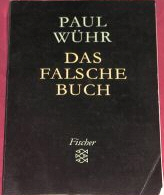 W
WDas falsche Buch is a 1983 German novel by Paul Wühr.
 W
WCarnival confession (German: Die Fastnachtsbeichte), by Carl Zuckmayer, is one of the better-known examples of German literature regarding Mainz carnival. The novel was published first in English language, by John Geoffrey Gryles Mander and Necke Mander, in 1961 in London.
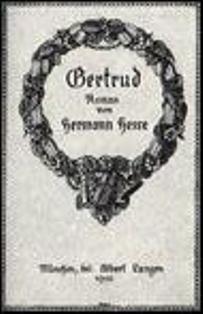 W
WGertrud is a novel written by Hermann Hesse, first published in 1910. It has been published into English by Peter Owen Publishers, London.
 W
WThe Glass Bead Game is the last full-length novel of the German author Hermann Hesse. It was begun in 1931 and published in Switzerland in 1943 after being rejected for publication in Germany due to Hesse's anti-Fascist views. A few years later, in 1946, Hesse won the Nobel Prize in Literature. In honoring him in its Award Ceremony Speech, the Swedish Academy said that the novel "occupies a special position" in Hesse's work.
 W
WGoldsborough is a proletarian novel by the German-American writer Stefan Heym.
 W
WGradiva is a novel by Wilhelm Jensen, first published in instalments from June 1 to July 20, 1902 in the Viennese newspaper "Neue Freie Presse". It was inspired by a Roman bas-relief of the same name and became the basis for Sigmund Freud's famous 1907 study Delusion and Dream in Jensen's Gradiva. Freud owned a copy of this bas-relief, which he had joyfully beheld in the Vatican Museums in 1907; it can be found on the wall of his study in 20 Maresfield Gardens, London – now the Freud Museum.
 W
WHasko is the title of the most successful novel of German pedagogue, bard, theatre maker and writer Martin Luserke. It is published in German, Dutch and French language.
 W
WJourney to the East is a short novel by German author Hermann Hesse. It was first published in German in 1932 as Die Morgenlandfahrt. This novel came directly after his biggest international success, Narcissus and Goldmund.
 W
WKnulp is a 1915 novel written by Hermann Hesse. It was Hesse's most popular book in the years before he published Demian. The novel is split up into three separate tales which are centered on the life of the main character: Knulp. Knulp, who was once a gifted and promising youth, is depicted as an amiable vagabond perpetually wandering from town to town, staying with friends. He is liked by almost everyone he encounters in the novel for his manners and charming demeanour. He often receives charity from those sympathetic with him.
 W
WMephisto – Novel of a Career is the sixth novel by Klaus Mann, which was published in 1936 whilst he was in exile in Amsterdam. It was published for the first time in Germany in the East Berlin Aufbau-Verlag in 1956. This novel, the Tchaikovsky novel Symphonie Pathétique, and the emigrant novel Der Vulkan are Klaus Mann's three most famous novels. An award-winning 1981 movie was based on Mann's novel. The novel adapts the Mephistopheles/Dr Faustus theme by having the main character Hendrik Höfgen abandon his conscience and continue to act and ingratiate himself with the Nazi Party to keep and improve his job and social position.
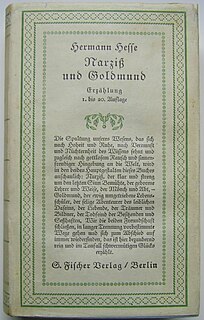 W
WNarcissus and Goldmund is a novel written by the German–Swiss author Hermann Hesse which was first published in 1930. At its publication, Narcissus and Goldmund was considered Hesse's literary triumph; chronologically, it follows Steppenwolf.
 W
WThe Nazi and the Barber of the German-Jewish writer Edgar Hilsenrath is a grotesque novel about the Holocaust during the time of National Socialism in Germany. The work uses the perpetrator's perspective telling the biography of the SS mass murderer Max Schulz, who after World War II assumes a Jewish identity and finally emigrates to Israel in order to escape prosecution in Germany.
 W
WThe Night of the Generals: A Novel is a thriller novel by German writer Hans Hellmut Kirst, published in 1962.
 W
WOn the Marble Cliffs is a novella by Ernst Jünger published in 1939 describing the upheaval and ruin of a serene agricultural society. The peaceful and traditional people, located on the shores of a large bay, are surrounded by the rough pastoral folk in the surrounding hills, who feel increasing pressure from the unscrupulous and lowly followers of the dreaded head forester. The narrator and protagonist lives on the marble cliffs as a botanist with his brother Otho, his son Erio from a past relationship and Erio's grandmother Lampusa. The idyllic life is threatened by the erosion of values and traditions, losing its inner power. The head forester uses this opportunity to establish a new order based on dictatorial rule, large numbers of mindless followers and the use of violence, torture and murder.
 W
WPeter Camenzind, published in 1904, was the first novel by Hermann Hesse. It contains a number of themes that were to preoccupy the author in many of his later works, most notably the individual's search for a unique spiritual and physical identity amidst the backdrops of nature and modern civilization, and the role of art in the formation of personal identity. The style of Peter Camenzind is easy to follow, even as it is a Bildungsroman in an atypical sense.
 W
WPetersburg is a novel by Russian writer Andrei Bely. A Symbolist work, it arguably foreshadows James Joyce's Modernist ambitions. First published in 1913, the novel received little attention and was not translated into English until 1959 by John Cournos, over 45 years after it was written.
 W
WThe Questionnaire is a 1951 autobiographical novel by the German writer Ernst von Salomon. It was published in the United Kingdom as The Answers. It is based on the denazification questionnaire which all Germans with some form of responsibility were forced to take by the military government after World War II. Salomon's detailed answers about his political background, membership of various organisations and so on became a portrayal of Germany during the interwar period, World War II and the immediate post-war period.
 W
WThe Reader is a novel by German law professor and judge Bernhard Schlink, published in Germany in 1995 and in the United States in 1997. The story is a parable, dealing with the difficulties post-war German generations have had comprehending the Holocaust; Ruth Franklin writes that it was aimed specifically at the generation Bertolt Brecht called the Nachgeborenen, those who came after. Like other novels in the genre of Vergangenheitsbewältigung, the struggle to come to terms with the past, The Reader explores how the post-war generations should approach the generation that took part in, or witnessed, the atrocities. These are the questions at the heart of Holocaust literature in the late 20th and early 21st century, as the victims and witnesses die and living memory fades.
 W
WThe Rings of Saturn is a 1995 novel by the German writer W. G. Sebald. Its first-person narrative arc is the account by a nameless narrator on a walking tour of Suffolk. In addition to describing the places he sees and people he encounters, including translator Michael Hamburger, Sebald discusses various episodes of history and literature, including the introduction of silkworm cultivation to Europe and the writings of Thomas Browne, which attach in some way to the larger text. The book was published in English in 1998.
 W
WThe Seventh Cross is a novel by Anna Seghers, one of the better-known examples of German literature circa World War II. It was published first in the United States, in an abridged version, in September 1942 by Little, Brown and Company. Its publication was surrounded by a certain amount of fanfare; by the end of September, there were already plans for a comic strip version of The Seventh Cross, it having already been selected as a Book-of-the-Month Club book.
 W
WSiddhartha is a 1922 novel by Hermann Hesse that deals with the spiritual journey of self-discovery of a man named Siddhartha during the time of the Gautama Buddha. The book, Hesse's ninth novel, was written in German, in a simple, lyrical style. It was published in the U.S. in 1951 and became influential during the 1960s. Hesse dedicated the first part of it to Romain Rolland and the second part to Wilhelm Gundert, his cousin.
 W
WSturm is a 1923 World War I novella by the German writer Ernst Jünger. It has a frame story set in the days before the Somme Offensive on the Western Front, where a group of German officers meet to discuss the war and listen to the literary sketches read by one of their members, Lieutenant Sturm.
 W
WThe Tables of the Law is a 1944 novella by German writer Thomas Mann. It is a dramatic retelling of the Biblical story of Moses contained in the Book of Exodus, although some of the laws which Moses proscribes for his followers are taken from Leviticus. It was the only story that Mann was ever commissioned to write, and he finished it in just eight weeks, beginning on January 18, 1943, and ending on March 13, 1943. Publisher Armin L. Robinson, believing the Ten Commandments to be the basis on which civilization was founded, wanted to make a movie detailing the Nazis' "desecration of the Mosaic Decalogue." Instead, he settled on a book, entitled The Ten Commandments: Ten Short Novels of Hitler's War Against the Moral Code, with ten authors, one for each commandment. Mann's novella, which he was paid $1000 to write, was originally meant to be the introduction to the volume, but Robinson liked it so much that he decided to make it the first story, under the heading "Thou Shalt Have No Other God Before Me." Mann considered his story to be greatly superior to that of his fellow contributors, and he considered the overall book a "failure".
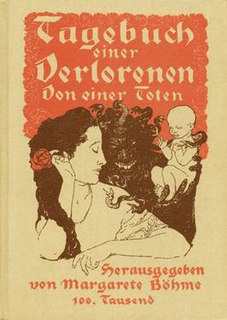 W
WTagebuch einer Verlorenen is a book by the German author Margarete Böhme (1867-1939). It purportedly tells the true story of Thymian, a young woman forced by circumstance into a life of prostitution. When first published in 1905, the book was said to be a genuine diary, though speculation quickly arose as to its authorship.
 W
WTristan is a 1903 novella by German writer Thomas Mann set in a sanatorium. It contains many references to the myth of Tristan and Iseult. The novella alludes in particular to the version presented in Richard Wagner's opera of the same name. As such, it can be seen as an ironic paraphrase, juxtaposing the romantic heroism of Wagner's characters with their essentially flawed counterparts in the novella.
 W
WVisit to Godenholm is a 1952 novella by the German writer Ernst Jünger. It tells the story of a group of people who are invited to the island Godenholm in Scandinavia, where they take part in a mind-altering séance with strong surreal imagery.
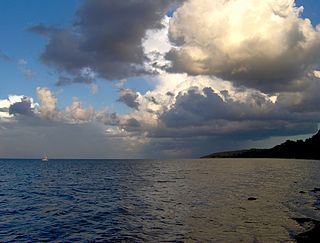 W
WWellen is a novel by Eduard von Keyserling that was first published in German in 1911. Set during a long hot summer in a small fishing village somewhere on the Baltic Sea, most likely on the Curonian Spit, it depicts a group of aristocratic city-dwellers spending their holidays in that remote part of the German Empire. However, rather than painting a rural idyll, Keyserling focuses on the follies of a doomed fin de siècle society whose self-imposed repressions eventually lead to catastrophe.
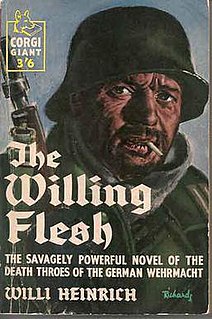 W
WThe Willing Flesh is a novel by Willi Heinrich, chronicling the Eastern Front combat experiences of a depleted infantry platoon during the 1943 German retreat from the Taman Peninsula in the Caucasian coast of Russia.
 W
WThe Young Man is a 1984 novel by the German writer Botho Strauß. It has a frame story about a man who enters the world of theatre, but the book mainly consists of phantasmagorical tales and allegories concerning art, alienation and German identity. An English translation by Roslyn Theobald was published in 1995.